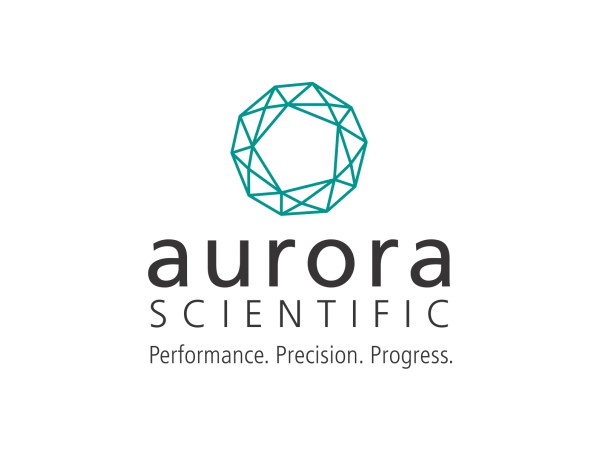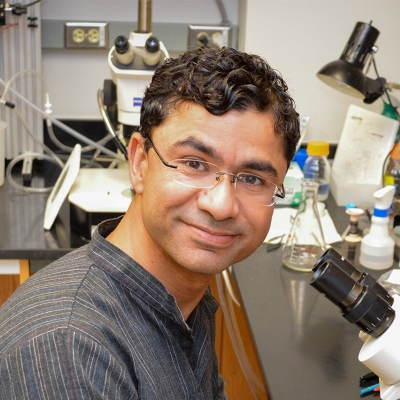Science of Aging: A Physiological & Translational Perspective
Targeting Biological Aging: A New Paradigm for 21st Century Medicine
WED, APR 21, 2021
Biological age is the greatest risk factor for nearly every major cause of death and disability, including COVID-19. Yet, traditional biomedical research and clinical approaches have generally focused on waiting until people are sick and treating individual diseases one at a time. Attempts to cure age-related diseases have proven unsuccessful, and the impact of “disease-first” approaches continue to be incremental. Recent advances in understanding them mechanisms linking biological aging to disease, or geroscience, have identified interventions that directly target the molecular hallmarks of aging. Unlike disease-specific approaches, such interventions have the potential to prevent multiple diseases of aging simultaneously, thereby greatly enhancing healthspan and lifespan for most individuals.
During this webinar, Dr. Matt Kaeberlein provides an overview of translational geroscience, which he believes will become the paradigm for the practice of medicine in the 21st century. He also discusses recent work with one such intervention, the drug rapamycin, and its potential to enhance healthspan in companion dogs and people.
Matt Kaeberlein, PhD
Professor and Director of the Dog Aging Project
University of Washington
The Challenges of Sarcopenia: Definition, Underlying Mechanisms, Interventions, and Outcomes
WED, MAY 19, 2021
During this webinar, Drs. Peterson and Guralnik discuss sarcopenia, the physiological mechanisms underlying the disease, and the current avenues of treatment and assessment that are being researched and developed for patients.
Sarcopenia is the age-related loss of muscle that causes decreased strength and functional limitations. Muscle loss occurs universally in people as we age, but some people lose muscle at an accelerated rate compared to others. While chronic disease can cause sarcopenia, it can also result from a sedentary lifestyle, hospitalizations and extended bed rest due to other conditions.
A gradual decline in muscle mass and strength begins around 30 years of age with this condition, and annual losses get larger throughout life. The self-reporting of functional difficulties to health care providers may give an indication that sarcopenia is present, but a more precise definition is needed for research and clinical use.
Efforts made in Europe and the US have used grip strength, gait speed and lean mass to define sarcopenia, but these definitions lead to large differences in prevalence rate and discordance in who is labelled as “sarcopenic”. To assess this condition, lean mass as measured by dual x-ray absorptiometry (DXA) may not accurately reflect actual muscle mass, but a new technique using dilution of deuterium-labelled creatine may prove to be superior in clinically diagnosing sarcopenia. Currently, a consensus has not been reached on the clinical outcome assessments that can be used by regulatory agencies to judge the effectiveness of drugs for sarcopenia.
A number of potential interventions are being explored to treat sarcopenia in older people, but no drugs are currently approved for this condition. The antidiabetic drug metformin shows promise in preventing many age-associated conditions, but appears to blunt the benefits of exercise on muscle. Senolytic drugs, which clear senescent cells, may improve muscle repair following injury preferentially in older individuals.
Charlotte A. Peterson, PhD
Professor and Director of the Center for Muscle Biology,
University of Kentucky
Jack Guralnik, MD, PhD, MPH
Professor of Epidemiology and Public Health,
University of Maryland School of Medicine
Experimental Muscle Mechanics in Aging and Disease
WED, JUN 2, 2021
The focus of this webinar is on the mechanisms underlying muscle impairment associated with aging and age-related diseases. This research evaluates the regulation of muscle contraction at the motor protein, single muscle fiber, and whole muscle levels using in vitro, in situ and in vivo methods in experimental and clinical settings. Specifically, Dr. Qaisar is interested in the contribution(s) of muscle SR stress and calcium dysregulation to loss of muscle mass and strength. Reduced calcium uptake by muscle SR plays a pivotal role in muscle impairment in aging while boosting SR calcium uptake with pharmacological activators can partially restore muscle mass and strength. Matt shares a technical overview of the experimental equipment used in this research. He discusses the design, component functionality, and the applications that can be explored with this system. He also shares some valuable insights into the parameters that can be measured and the data that can be produced with various experimental designs.
Rizwan Qaisar, PhD
Engineering Sales & Assistant Professor, College of Medicine
University of Sharjah
Matt Borkowski
Engineering Sales & Marketing Manager,
Aurora Scientific Inc.
Aging and Bone Health
TUE, JUN 22, 2021
Join Dr. Joy Wu as she discusses the potential therapeutic approaches to age-related bone loss.
Osteoporosis is one of the most common degenerative diseases of aging. Half of adult women and one-quarter of adult men can expect to sustain an osteoporosis-related fracture. While current approaches to the treatment of osteoporosis can lower the risk of fracture, there is still no cure. In this webinar, Dr. Wu reviews the pathophysiology of bone loss with aging, in particular the imbalance between bone formation by osteoblasts and bone resorption by osteoclasts. She discusses stem cell sources of osteoblasts, anabolic signaling pathways, and targeting inflammation and senescence.
Joy Wu, MD, PhD
Associate Professor of Medicine, Endocrinology
Stanford University
Quality, Quantity and Timing: Regulating Healthspan and Lifespan With Diet
WED, JUL 7, 2021
Join Dudley Lamming, PhD for a deep dive into his research involving how diets can affect metabolic health and longevity.
The population of the world is graying, but for many, living longer will not necessarily mean living in good health, and finding ways to promote healthy aging is critical. Here, Dudley highlights recent and ongoing research into how quality, quantity, and timing of what we eat affects metabolic health, frailty, and longevity. First, he uses genetic mouse models to uncover the role of insulin sensitivity in the benefits of calorie restriction (CR), an intervention that extends the healthspan and lifespan of diverse species including mice. He then dissects the role of calorie and collaterally imposed fasting on the benefits of a CR diet. Finally, he examines how dietary levels of protein and the branched-chain amino acids (BCAAs) leucine, isoleucine, and valine impact longevity. These results demonstrate that what, when, and how much we eat have significant effects on metabolic health, fitness, and lifespan, and suggest that daily fasting or reducing dietary BCAAs may be a translatable intervention with the potential to promote healthy aging.
Malignant Brain Aging: The Formidable Link to Neurodegeneration
WED, JUL 28, 2021
Aging is a natural biological process that impacts vitality and function of cells, tissues, organs, systems, and the entire organism. Benign brain aging is associated with slower processing, reduced agility and resilience, and greater requirement for rest. For the most part, humans tolerate such declines in youthfulness because their capacity to enjoy life, engage in social discourse, remain physically active, and utilize perceptive and analytical thought processes are largely preserved. Unfortunately, a significant subset of the population experiences a malignant form of brain aging. The entire process accelerates and progresses to an extreme stage marked by losses in neuronal cell number, function, connectivity, and plasticity. This translates to impairments in thinking and mentation, analytical skills, capacity for normal social interactions, and ability to enjoy life and self-care. These are classical features of neurodegeneration. The pivotal factors that cause the brain to derail from a benign to malignant course of aging are unknown. Identifying ways to reverse the switch is one of the over-arching goals of brain science directed toward prevention and treatment of neurodegenerative diseases.
In this webinar, Dr. de la Monte shows how malignant aging and attendant neurodegeneration are likely mediated by fundamental defects in insulin’s actions and aberrant cellular responses to insulin, mimicking the effects of diabetes mellitus. Since very similar processes drive malignant aging of other tissues, including skeletal muscle, it may be possible to develop universal strategies for the treatment and prevention of many aging-associated degenerative diseases.
Suzanne de la Monte, MD, MPH
Professor of Pathology and Laboratory Medicine,
Brown University
From “Artificial” to “Real”: What 24/7 Home Cage Monitoring Teaches Us In Pre-Clinical Neurodegenerative Disease Models
WED, SEP 15, 2021
Artificial environments in which rodents are tested for their behavioral repertoire are still the gold standard for neuroscience research. However, increased concern of the validity of animal testing and the welfare of the laboratory animals is about to change this by moving to testing of behaviors in a setting that is familiar to the animals.
In this webinar Dr. Stefano Gaburro, Scientific Director a Tecniplast, will present an innovative non-invasive and scalable technique called Digital Ventilated Cage (DVC) that is meant to perform longitudinal studies for neurodegenerative disease models using long term monitoring of mice in a stress-free environment.
In the second part of the webinar, Dr. Brun Ulfhake from Karolinska Institutet will show how this technique can be used to study biorhythmicity (circadian and circannual) of small rodents and approaches to characterize and extract metrics of the spontaneous home-cage way of life for mice. These metrics may translate better to behavioral observations made in humans.
Brun Ulfhake, MD, PhD
Senior Professor
Department of Laboratory Medicine
Karolinska Institutet
Stefano Gaburro, PhD
Scientific Director
Digilab Solutions
Tecniplast S.p.A
Aging and Skeletal Muscle Plasticity
WED, SEP 29, 2021
Skeletal muscle makes up greater that 45% of total body weight and is important for general health and wellness because of its primary role in movement, as well as, its role in the control of systemic functions such as glucose homeostasis, thermoregulation and metabolism. Muscle adapts to a variety of signals to modify its size and function throughout life, however, the adaptability of muscle to increased loading and activity is diminished with age. During aging, loss of muscle mass and strength is a function of deleterious changes to multiple components of the neuromuscular system. Proper communication between motoneurons and muscle is critical for the maintenance of muscle mass and force development. In this webinar, Dr. Sue Bodine will discuss potential mechanisms regulating the loss of muscle mass during aging, with particular emphasis on the role of denervation/reinnervation. She will also discuss the potential role of denervation in the attenuated recovery of muscle mass and strength following disuse atrophy observed with aging.
Cardiac Inflammation and Repair Following Myocardial Infarction
WED, OCT 13, 2021
Following myocardial infarction (MI), the left ventricle (LV) undergoes a series of cardiac wound healing responses that involve both the stimulation of robust inflammation to clear necrotic myocytes and tissue debris and the induction of extracellular matrix (ECM) protein synthesis to generate an infarct scar. Collectively, this process in known as LV remodeling. Matrix metalloproteinase-9 (MMP-9) is a key regulator of LV remodeling post-MI, through direct effects on ECM turnover as well as indirect effects on the regulation of the major cell types that coordinate cardiac wound healing- namely the infiltrating leukocytes and the cardiac fibroblasts. We will discuss recent research that has expanded our understanding of MI LV remodeling, including recent proteomic advances focused on the ECM compartment to provide novel functional and translational insights. In summary, this webinar will provide an overview of how cardiac ECM research has evolved over the last decade and will provide insight into future directions that will drive our understanding of MMP directed cardiac ECM turnover after MI.
Merry L. Lindsey, PhD
Stokes-Shackleford Professor and Chair,
University of Nebraska Medical Center
Sponsored by:
Cardiac Glucose Metabolism: Heart Failure in Diabetes and Aging
TUE, NOV 16, 2021
Heart failure is a disorder of aging, whose prevalence is amplified in the presence of diabetes. To support its incessant need for ATP to fuel myocardial contraction, the heart metabolizes multiple available substrates. Quantitatively, fatty acid oxidation generates >60% of myocardial ATP with the remainder coming from lactate and glucose. In heart failure and diabetes, the relative contribution of these metabolites are altered. Recent studies have revealed that changes in patterns of glucose utilization in the failing heart and in diabetes activate non-ATP generating metabolic pathways that directly activate pathways that promote myocardial remodeling in the failing heart. In this webinar, Dr. Abel presents recent studies revealing novel mechanisms by which perturbed metabolism of glucose and pyruvate contribute to the pathophysiology of heart failure.
E. Dale Abel, MD, PhD
Chair, Professor of Medicine
Internal Medicine
The University of Iowa

















